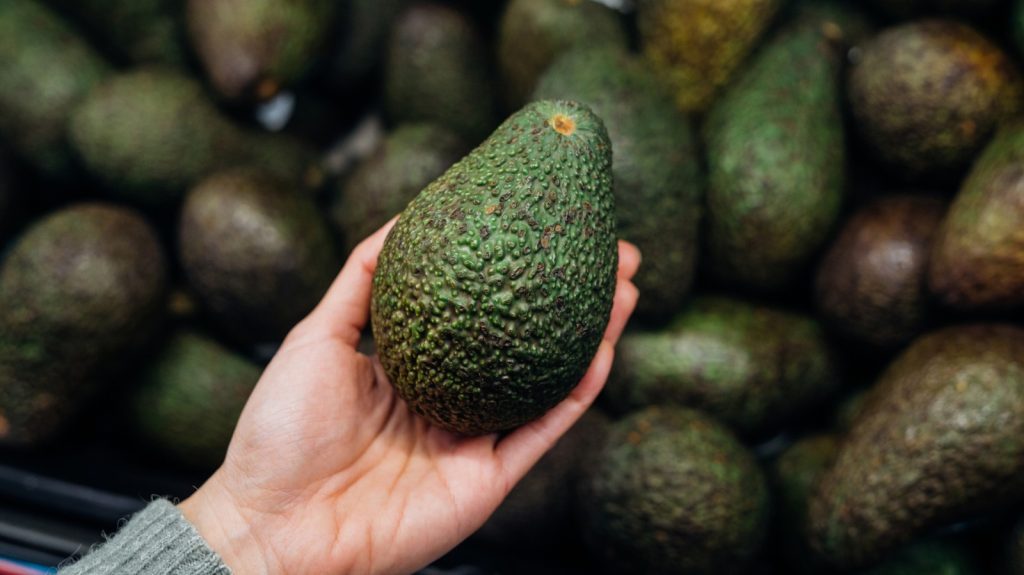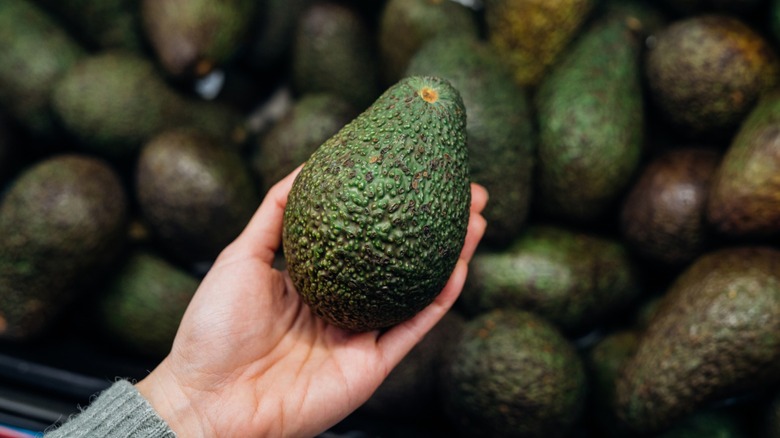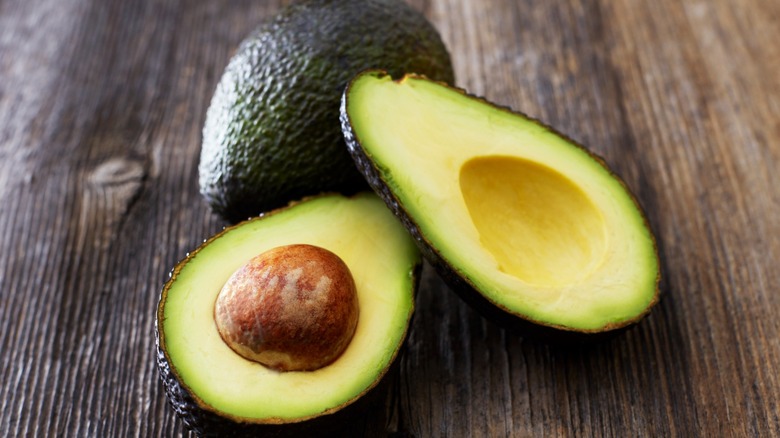
Picking the perfect avocado can feel like taking a shot in the dark. The fruit’s mysterious, bumpy, brown exterior can have the most expert shoppers snookered or stumped. And yes, the green orb is a fruit, not a vegetable. Slicing open an avocado to find brown mush makes for instant disappointment, whereas cutting one open to find a hard, unripened interior may lead to dismay. The stem is the external indicator of an avocado’s internal state. It’s the woody knob opposite the base of the avocado left over from the ligament that connected the fruit to the tree during the growing process, also known as a pedicel.
Think of it as a barometer, conveying imperative information. If you’re seeking a mature, ready-to-use avocado, peel off the stem with a fingernail or other sharp tool. If it does not separate easily, the avocado is not yet ripe. If the stem pops off revealing brown, tinted skin, the avocado is overripe. The perfect avocado’s stem will disconnect with ease, unmasking a green hue. This is your guy! This method does come with caveats — once the stem is removed from the avocado, the fruit is exposed to air, which could lead to premature oxidization and browning.
Luckily, we tested five methods to store cut avocados. Use these hacks to prolong the life of exposed avocados. Timing is also a consideration. An avocado has a two to three day ripeness aperture if refrigerated during its peak. A premature avocado will ripen in four to five days if left at room temperature, creating a short period of prime usage. The window from grocery store to stomach is fleeting. The more you know about your avocado’s ripeness, the better suited you will be to decide when to savor it.
Take a look and a feel
For a less invasive method of measuring a prime avocado than the stem technique, use your senses. Sight and touch can reveal hidden insights to curious consumers. Look to the color as an indicator of ripeness. Dark green and purple exteriors indicate an avocado is at its flavor peak. If you’re purchasing an avocado to feast on later, look for a dark, but not quite as green, skin shade. A quick squeeze can also give you information on an avocado’s innards. A little give is good; you want to be able to feel the insides retract, but not squish. Try using the palm of the hand rather than a fingertip to avoid bruising. The technique is a little Goldie Locks-esque: It should be not too hard, not too soft, but just right.
Avocados are not the easiest book to judge by their cover. Using the senses of sight and touch, you can accurately predict the hidden conditions under the surface and avoid making one of the common fresh fruit-buying mistakes. For additional assistance, check out our 13 best tips for picking and buying avocados and apply your newfound knowledge to a plethora of quick and easy avocado recipes. Although confounding, they are creamy, complementary, and worth the extra effort. “Avocado must be a magical fruit. The name itself sounds like an invocation,” coins Michael Bassey in his book “Song of a Nature Lover” (via Goodreads). We agree!









